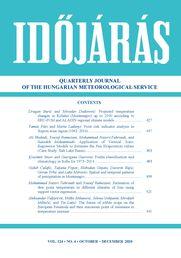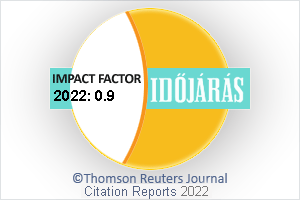The prediction of global climate change using the values recorded in a statistical period requires a precise method that can accurately identify the fluctuations of these changes. By patterning these changes, the parameter values for the years or future periods are predicted, or the statistical gap can be eliminated. In this research, meteorological data of six stations in different climates of Iran were used to model and estimate the values of the dew point temperature (DPT). The stations studied are Ahvaz, Urmia, Kerman, Gorgan, Rasht, and Babolsar. In order to estimate the DPT values, support vector regression was used, and to optimize the parameters of the support vector regression model, the ant colony algorithm was used. In this study, four different input patterns of meteorological data have been investigated as input of the support vector regression model. Pattern I with seven inputs (monthly minimum, maximum, and average air temperatures, monthly precipitation, saturation vapor pressure, actual vapor pressure and relative humidity), Pattern II with three inputs (monthly average air temperature, saturation vapor pressure, and actual vapor pressure), Pattern III with two inputs (monthly minimum and maximum air temperatures), and Pattern IV with an input (monthly average air temperature) were used. It is recommended that if the number of inputs in the model is small, the model will be more user-friendly. Based on the results of analyzing different patterns, it can be concluded, that Pattern III is the suitable pattern for estimating DPT values at the stations studied in different climates of Iran based on the three criteria of root mean square error (RMSE), Nash–Sutcliffe model efficiency coefficient (NSE), and coefficient of determination (R2). Overall, the results showed that the selected pattern increases the accuracy of the model by up to 24% compared to the conventional model.

 letöltés [pdf: 2798 KB]
letöltés [pdf: 2798 KB]










